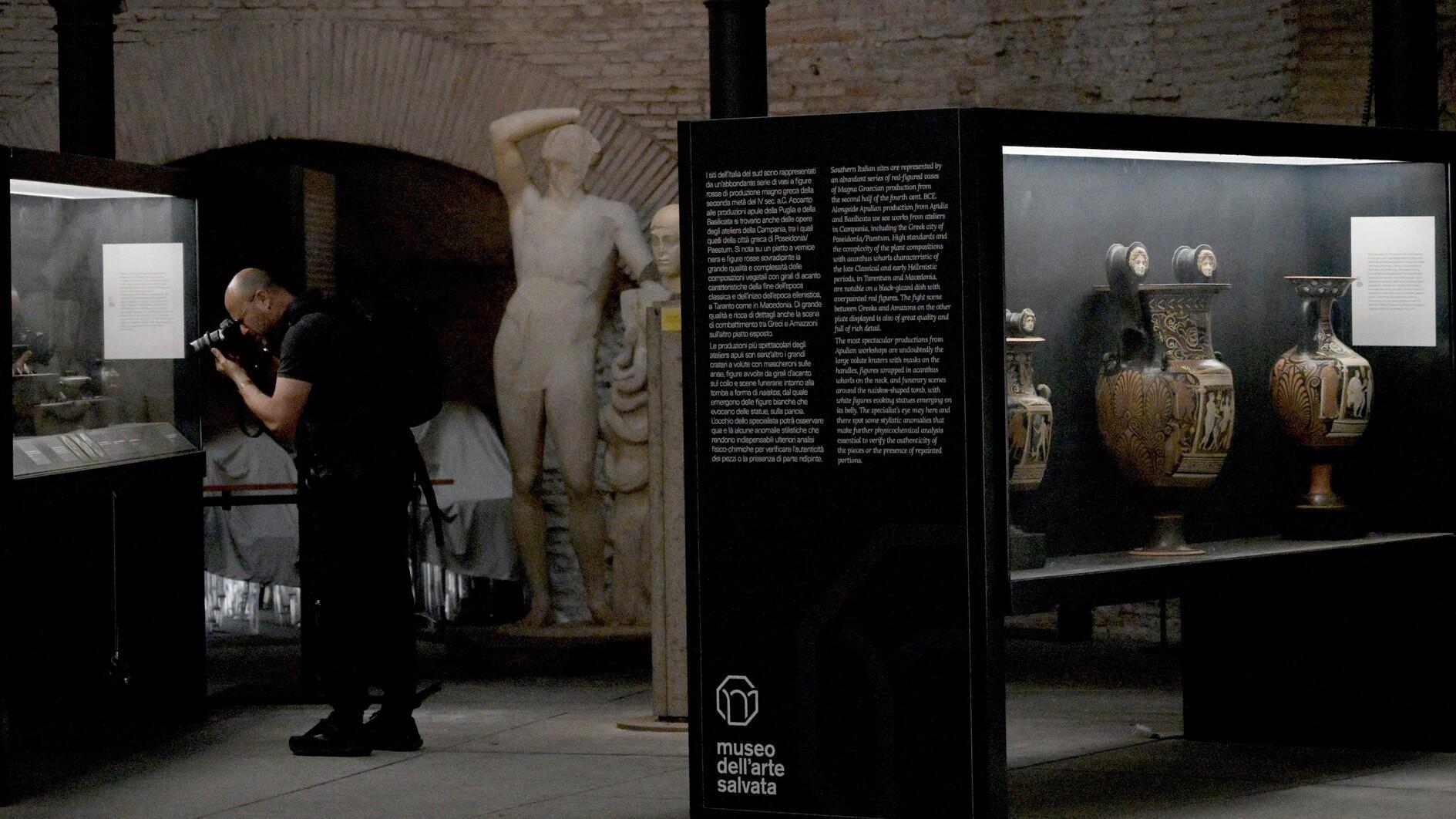
Antiquities recovered after being looted in Italy and sold on the global black market have found their sanctuary in the heart of Rome.
The "Museum for Rescued Art" is housed in a spectacular hall within the majestic Diocletian Baths, ancient Rome's largest bath complex.
Currently holding dozens of amphorae, coins and busts, the museum stages rotating exhibits aimed not just at showcasing the art but recounting how it was rescued.
Some of the antiquities were looted during illegal excavations of Etruscan necropolises north of Rome or from secret digs in the southern region of Puglia.
Many were smuggled out of Italy via a network of antique dealers and sold to foreign collectors.
Some of the objects highlighted were "resold or donated to major American museums" in the past, said museum director Stephane Verger, a French archaeologist.
Italy has waged legal and diplomatic battles lasting years as it seeks to recover its stolen artworks and plundered archaeological artifacts.
Two years ago it scored a major success.
The prestigious Getty Museum in Los Angeles agreed to return to Italy a group of three life-size terracotta statues known as "Orpheus and the Sirens" dating from the fourth century B.C., acknowledging they had been illegally excavated.
They, too, made their way to the Museum for Rescued Art, part of a thematic exhibit on Italian terracotta.
"We don't want to be like those big museums and simply show beautiful works," Verger told AFP. "It is an educational museum which shows all the dangers of international trafficking."
But the works do not stay there. "After being exhibited for some time, they are repatriated to other Italian museums," Verger said, precisely where they should have been all along had they not been smuggled out of the country.
The museum, which opened two years ago, is temporarily closed due to construction works ahead of the 2025 Jubilee Year, in which millions of Catholic pilgrims are expected to visit Rome.